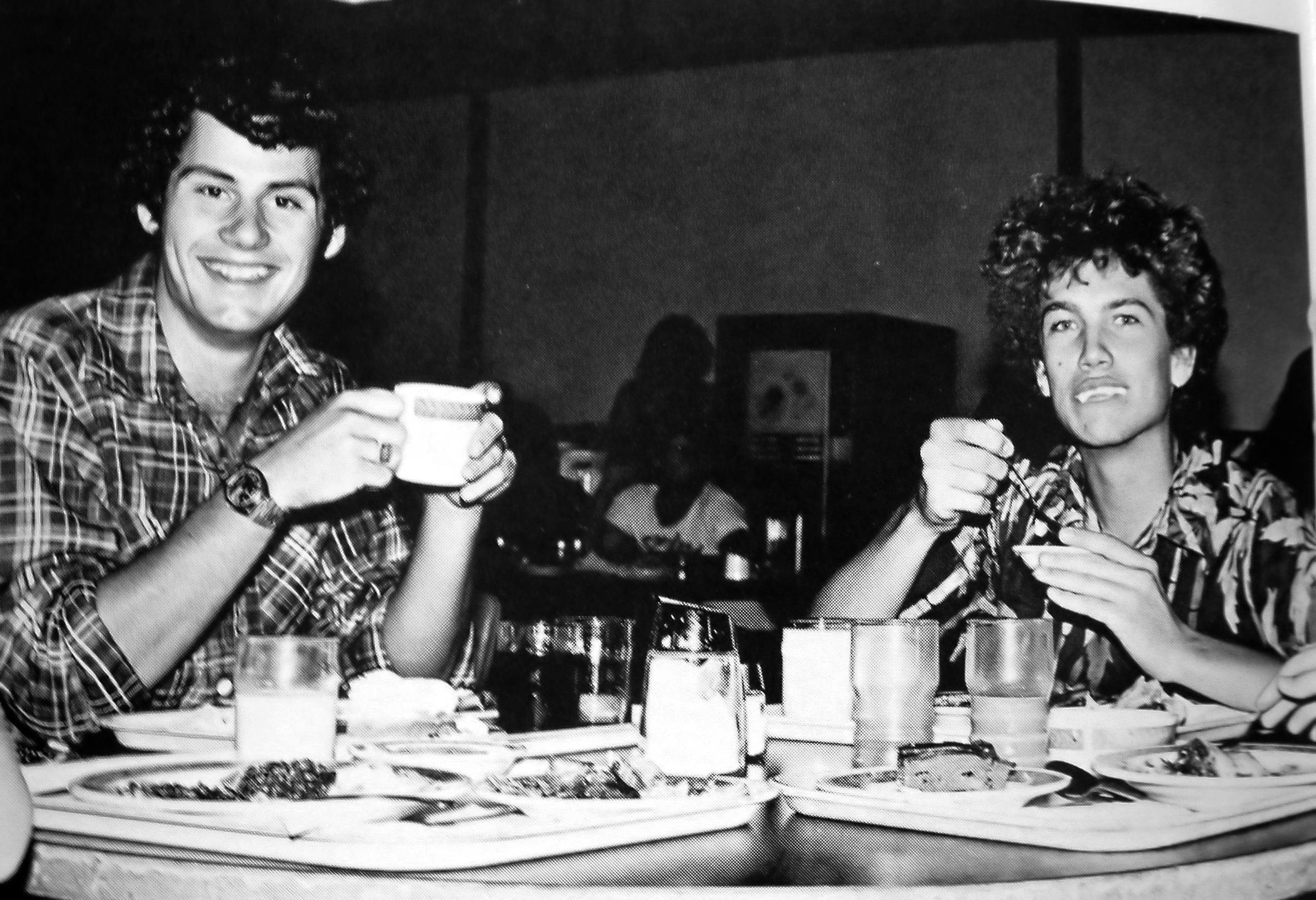Dining through the decades

By Denise Mai
Oct. 18, 2010 11:46 p.m.

photos courtesy of bruinlife 1960, 1978
Think lots of stainless steel, one meal line with pre-prepared food and service from more of your friends, in a homey environment where it’s possible that everyone did actually know your name.
This was the face of dining in 1959, the year that Dykstra Hall, the first form of undergraduate housing on the Hill, was built. As a result of all of the undergraduate students finally able to live on campus, the creation of dining services was a natural fit.
“(Dorm food) used to be very structured, and very parental,” said Dan Les, who worked in Rieber Hall as a student employee in 1975 and continued to pursue a career in dining services.
According to Angela Marciano, who worked beside Les, the one big food line served food that made up the elements of classic family dinners back in her day.
“There would be a big stainless steel pan, and you would get a vegetable of the day, a yellow vegetable, a starch and a choice from different entrees ““ beef, chicken, fish or vegetarian,” Marciano said.
Aside from the restricted selection, students weren’t free to roam from hall to hall the way they can now.
“You couldn’t eat wherever you wanted, so whole floors would eat at the same time and have the same place to sit ““ it was like a family going down to the dining room for dinner, as much as a family could be for 600 to 700 students,” Marciano said.
The coziness of familiar faces was rooted not only in the same group of students in the dining area every night but also in the employees. At the time, according to Les, two-thirds to three-fourths of the employees were students, most of whom also lived in the halls, compared to the only 5 or 10 percent of students who are dining employees now.
“It was a very different environment. Only that hall ate there, so throughout the hall, everyone knew each others’ names, even the custodians and the career employees,” Marciano said. “It was the nuance of the era.”
Yet, everything began to change in the late ’90s, with increasing student requests and the 1997 renovation of Rieber Hall. The delivery system that was established that year allowed for more food to be cooked to order, allowing for the customization that is so common now. Suddenly, more variety was added to the menu, decor changed from the clean, linear stainless steel of the old dining areas to make for a friendlier atmosphere, and students were given permission to migrate.
“1997 was a watershed moment, when there was a shift to recognize differences in students,” Les said.
With fewer nuclear family dinners and dining out becoming more common, students began to acquire more distinguished, developed tastes for what they wanted, with the halls mirroring that change in society, Marciano said.
Another aspect of dining that changed was an expansion of the kind of meal plans available. For a time in the 1970s, two plans were possible, one offering 15 meals a week Monday through Friday, and the other offering 19, including weekends. In the early 1990s, though, only the 19 meal plan was offered in conjunction with more regular meal times like 11 a.m. to 1:30 p.m. for lunch.
The evolution to the current standard of five meal plans, combined with the ability to go into a dining hall more than once in a meal period and more late-night options, may have been the culprit for the shift from what was the traditional “freshman 10″ to today’s comparable “freshman 15.”
The monumental changes stemming from 1997 have carried over to today’s dining with the expanded culinary expertise of the kitchens, including an executive chef, certified chefs as well as increased efficiency and diversity in dining.
“Now, not only do you see variety, but the infrastructure behind that to make sure that what you receive on your dish on a daily basis is exactly what you want,” Marciano said.
This kind of structure and efficiency are most evident in the commissary, where cooks Miguel Miranda and Ronnie Davidson work and what Davidson described as the mass-producing, central kitchen of the halls.
“The commissary makes sure that if, say, chicken noodle soup is being served, it’s the same everywhere,” Davidson said.
With 17 years of experience with UCLA dining, Miranda expressed awe at the variety available to students nowadays.
“There are so many different kinds of foods now, I’m surprised that there are that many,” Miranda said. “Little by little, it’s grown.”
Times changed, and so did dining, evolving from the days when apples used to be cut in half to ensure that they would be eaten at mealtime, not later, dinner was not served past 6:30 p.m. and the idea of soft-serve ice cream take-out was revolutionary. With current opportunities for desserts at every meal and a smorgasbord of options catering to late-night munchies, dining has undergone quite a transformation.
“I guess we finally recognized that people want what they want, when they want it, in the way that they want it,” Marciano said.


